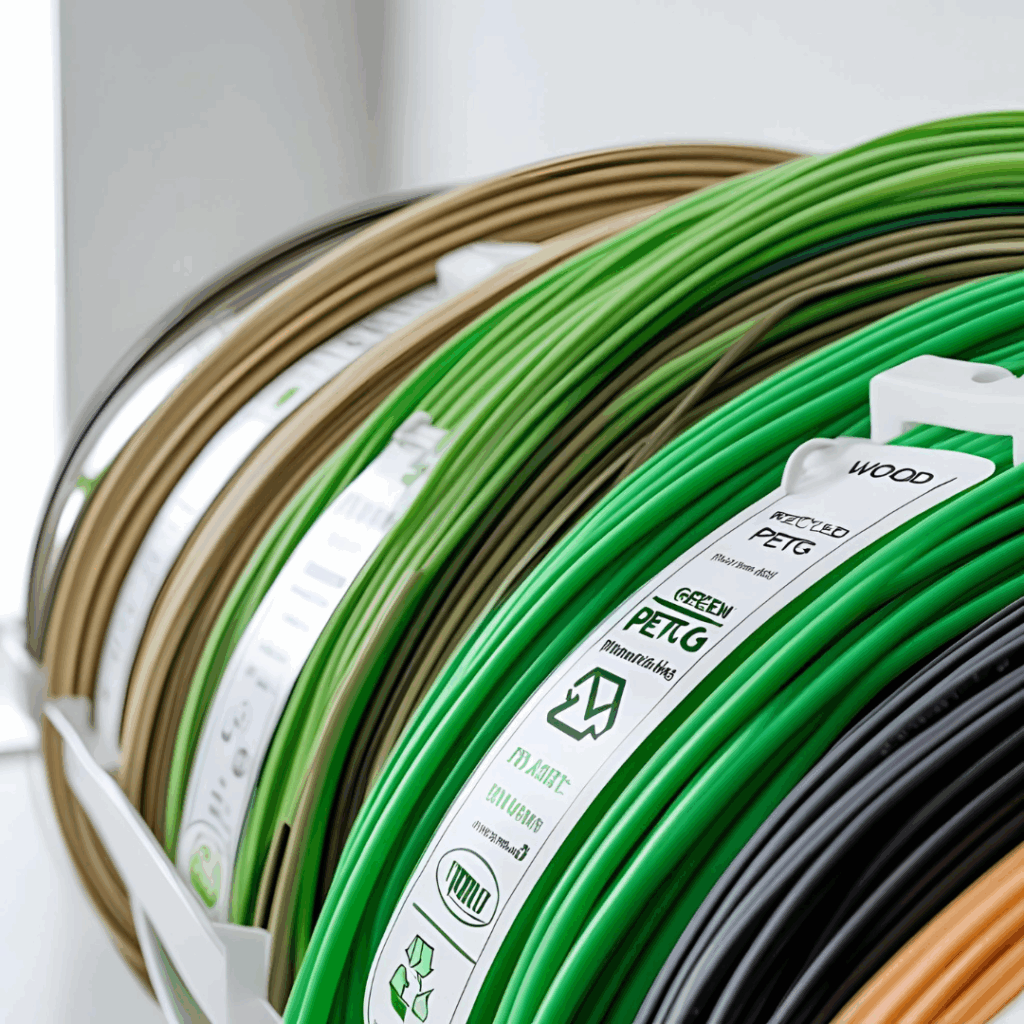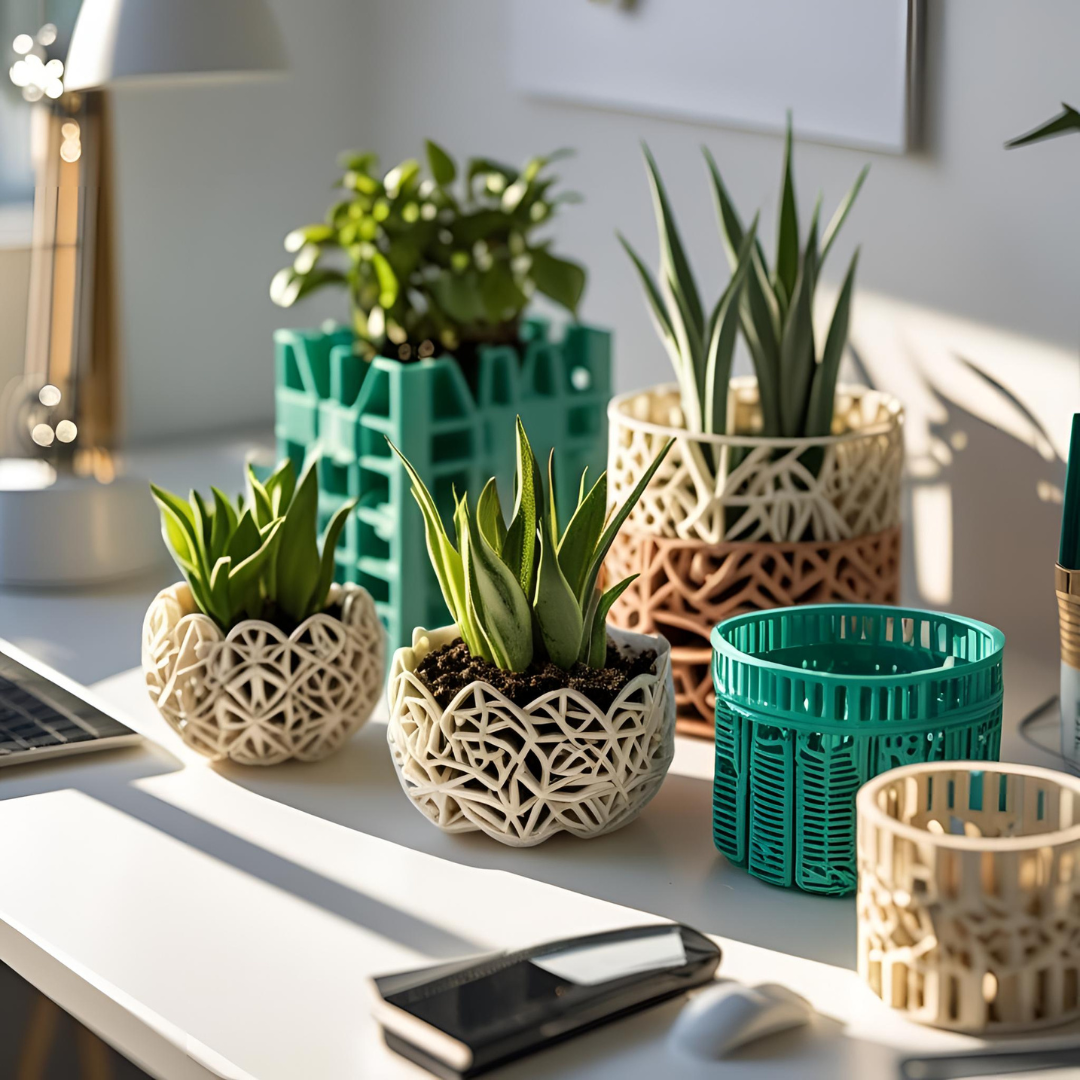3D printing has become a revolutionary tool in various industries — from engineering and architecture to fashion and the arts. However, with growing concerns about plastic pollution and resource scarcity, the focus is now shifting toward more sustainable solutions. Among them, green 3D printing has emerged as a powerful way to unite creativity, innovation, and environmental responsibility.
This comprehensive guide explores how biodegradable and recycled filaments can be used to create eco-conscious, handmade objects — and how you can join this movement with practical ideas, responsible choices, and future-focused thinking.
What Makes a 3D Printing Filament Sustainable?
The foundation of sustainable 3D printing lies in the materials used. While traditional plastics like ABS or standard PET are durable, they come with a high environmental cost. They are typically derived from fossil fuels and are not biodegradable, leading to long-term pollution issues when disposed of improperly.
To print sustainably, it’s essential to choose materials that are:
- Biodegradable or compostable
- Recycled or recyclable
- Sourced from renewable resources
- Produced with low environmental impact
Let’s explore the two most popular categories


PLA: The Gold Standard in Biodegradable Filaments
Polylactic Acid (PLA) is a biodegradable thermoplastic derived from renewable biomass — primarily corn starch, sugarcane, or cassava. It’s one of the most widely used sustainable filaments due to its eco credentials and user-friendly characteristics.
Why PLA is Eco-Friendly:
- Biodegradable under industrial composting (not in backyard settings, but better than petroleum-based plastics)
- Low emissions during printing, making it safer for indoor environments
- Energy-efficient to produce compared to oil-derived plastics
In addition, PLA is available in a wide range of colors and can even be infused with natural fibers like hemp, coffee grounds, or algae to further enhance its sustainability and visual appeal.
Recycled and Composite Filaments
While PLA is a top choice, it’s not the only one. Recycled filaments offer another valuable path toward greener printing.
Examples of Recycled and Natural Composites:
- Recycled PETG (rPETG): Sourced from recycled water bottles, rPETG retains strength and flexibility while cutting down plastic waste.
- Recycled ABS: Although less sustainable than PLA, recycled ABS repurposes industrial and post-consumer waste.
- Woodfill and Corkfill: PLA blended with wood or cork fibers creates biodegradable prints with a natural, earthy appearance.
- Algae and Carbon Fiber Composites: Still emerging, these innovative blends can reinforce parts while maintaining environmental standards.
The key is to select filaments from verified suppliers that disclose their recycling processes and source materials.
Real-World Applications: Eco-Friendly Projects with Green 3D Printing
The beauty of 3D printing is its flexibility. With sustainable filaments, you can make useful, decorative, or even wearable objects — all with minimal environmental impact.
Sustainable Home Decor and Utility Items
3D-printed home goods are increasingly popular for their design versatility and customizability. When made with PLA or other sustainable filaments, they also carry a powerful ecological message.
Project Ideas:
- Indoor plant pots with geometric or organic patterns
- Lampshades using wood-infused filaments for a warm glow
- Utensil trays, organizers, and custom drawer inserts
- Wall-mounted hooks or shelves with a minimalist touch
These objects serve both aesthetic and functional purposes, and they reflect a commitment to conscious living.

Educational and Creative Toys
The toy industry generates massive plastic waste. Sustainable 3D printing allows for the creation of safe, durable, and compostable toys, especially educational tools.
Examples include:
- Alphabet and number blocks made from PLA
- Puzzle boards and interlocking shapes
- Mini figurines or building sets with modular parts
Customizing these objects encourages learning through play while promoting sustainable consumption.
Jewelry and Fashion Accessories
Eco-friendly fashion is on the rise — and 3D printing is a great way to create zero-waste accessories.
Using biodegradable or recycled filaments, you can design:
- Earrings, bracelets, and pendants with intricate detail
- Eyewear frames with wood or recycled PETG
- Clothing fasteners, buttons, or belt buckles
Since fashion is often seasonal, using compostable or reusable materials ensures that pieces can either be safely discarded or repurposed later.
The Bigger Picture: Environmental and Business Benefits
Sustainable 3D printing isn’t just a trend — it’s an ethical and strategic choice for creators and businesses alike.
Environmental Impact
Choosing eco-friendly filaments helps:
- Divert waste from landfills (e.g., PET bottles)
- Reduce the carbon footprint associated with plastic production
- Lower indoor air pollution during printing
- Minimize energy consumption, especially when using local or solar-powered printers
Economic Value for Entrepreneurs
Sustainability can also be profitable:
- Unique product appeal: Eco-friendly designs stand out in competitive marketplaces.
- Lower shipping and production costs: On-demand printing means no need for warehouses or bulk inventory.
- Grants and partnerships: Many sustainability-focused businesses qualify for funding, awards, or media attention.
Eco-friendly printing is especially attractive to younger consumers who value ethical brands and conscious consumption.
Getting Started with Sustainable Printing
If you’re new to this space, don’t worry — you don’t need expensive equipment or industrial know-how to begin. Here are some practical tips to get started:
Choosing the Right Filament
- Look for certified compostable or recycled labels
- Research the brand’s transparency around sourcing and production
- Start with small spools to test quality before bulk orders
Sustainable Workshop Practices
- Recycle failed prints and trimmings using filament recyclers or grinders
- Use solar energy or green power suppliers for lower-impact printing
- Avoid single-use packaging — opt for kraft paper, cardboard, or biodegradable mailers
These choices matter. Over time, they reduce your environmental footprint and can be used as strong selling points if you commercialize your creations.
Resources and Community Support
You’re not alone on this journey. Makerspaces, online communities, and educational platforms are increasingly promoting green printing.
Helpful platforms include:
- Thingiverse: Many eco-themed design files available
- Printables (by Prusa): Tags for biodegradable filament compatibility
- Reddit /r/3Dprinting: Threads focused on sustainability and filament reviews
- YouTube Channels: Many creators showcase eco-friendly print projects, material tests, and printer tips
Sustainable 3D Printing Is the Future of Creative Innovation
We’re entering an era where creativity must go hand-in-hand with responsibility. Sustainable 3D printing enables us to explore new design horizons while preserving natural resources. Whether you’re crafting personalized gifts, building your own product line, or just experimenting at home, you can do so in harmony with the planet.
What matters most is making conscious decisions — from the filament you buy to how you package and share your creations. As demand for low-impact, ethical goods grows, your commitment to green printing can inspire others and become a powerful differentiator in a crowded market.







